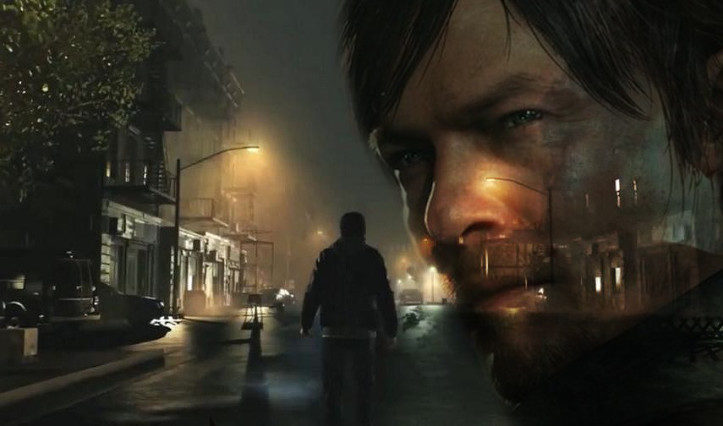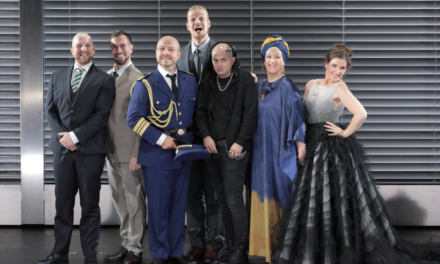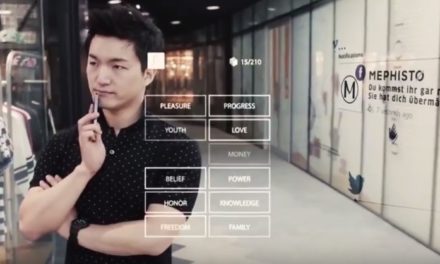Interview with Dr. Robin Curtis, professor of media studies at Albert-Ludwigs-Universität Freiburg who puts herself between theory and practice with expertise both in filmmaking and in researching the history of immersion.
How did you start to become more immersed in the concept and history of immersion?
I was already teaching at the university when I got the opportunity to start a PhD. I was interested in autobiographical film and how it constructs a particular fictional self but claims that it is factual. It makes claims about the world and history, about a certain physical place inside history, and invites the viewer to step into that place, which is not unlike being in a virtual-reality world. This is exactly how I arrived at the question of immersion in the midst of the research I was doing into the practice of audiovisual autobiography in German film. It is a very curious practice, as there were very few films made in Germany before 2000 that were autobiographical. It was a very unpopular genre in Germany so these films took very strange forms.
Because of the fear of facing the outcomes of World War Two?
I think it is a complicated question. On the one hand, there were a lot of literary autobiographies and in the 1970s there appeared a whole wave of autobiographies by people whose parents were prominent Nazis, involved in the Third Reich. There was a wave in literature but there was no comparable wave in film. I started to wonder how this self makes an appearance, how was it constructed in German film and video. My thesis in that book is that the self is contingent on context, on historical and cultural context. German films made in the last hundred years constructed a very particular viewing position that had to do with the self. I started to think from that position–and the way in which this was a kind of immersion, in which you are immersed into history. It might be fictional, it might be made up, but you don’t know because the claim of the film is that these are facts in a certain fashion, that has to do with the world and the way that it “was.” That was when I first started to think of immersion. That was the theoretical hinge of that book.
I already read Oliver Grau’s book–I knew it actually before it came out in a revised English version (as Virtual Art. From Illusion To Immersion). I knew him when I was still living in Berlin and came to know that work when it was still his dissertation (which then appeared in German as Virtuelle Kunst In Geschichte Und Gegenwart). I didn’t agree with his thesis about the importance of the apparatus for the definition of immersion because I felt that the text or the specific use of an apparatus, was being excluded by Grau from his description of immersion. To my mind, it has to be conceived of as a practice rather than as an apparatus, or transhistorical and transcultural. Instead, I believe that certain use values to create immersion and certain ends.

Robin Curtis
At that time I was employed in a “Collaborative Research Centre” in Berlin that was investigating performativity across disciplines. In that particular context, I was researching one thing–the way in which film projection, the situation of a projection, is performative. But increasingly we began to focus on synesthesia and intermodality and the way in which reception of a film, like a film viewing, addresses the body in various ways not easily explicable on the basis of the apparatus. I ended up doing quite a bit of research into synesthesia and intermodality of perception. All of that flowed back to the whole question around immersion. What capacities are we bringing as bodies to the encounter with the so-called immersive object? How is it that we are having experiences beyond what the object is offering per se?
The other topic that I began to research was “Einfühlung,” or the history of empathy aesthetics. I examined the very complex state of those debates in the 19th century, largely depending on the context of spatial experience, and how that flowed into the work of a whole host of different scholars, many of whom worked in the context of art history (even before it was art history), but also in architecture and architectural theory. That also began to interest me: the way that the formalism of empathy aesthetics also lent itself to a discussion of immersion. In other words, what kind of alignment are we experiencing when we watch things or encounter them? A formal alignment–not just the fact that I identify with characters or other human figures with intentions–not the narrative form. But rather an alignment with the formal structures of the things that we encounter.
In other words: to me, immersion can be abstract as well as representational. How do we engage with that kind of abstraction: that’s often a part of virtual reality.
Now is the time to talk about your definitions of immersion, but first it would be important to define what we call virtual reality?
I listed a cloud of maybe 50 terms that are synonyms for immersion or aligned experiences. I would always say immersion is one of the words that we use today in this specific historical moment to do certain things. One of the things that is happening to immersion has everything to do with capitalism: immersion is a word that has enormous cultural capital at the moment and suggests cutting-edge technology.
First and foremost the word has an advertising quality and advertises something that is “contemporary.” I would say that is the top layer. Beyond that, it begins to get very complicated. I would return to the dictionary definitions. Of course, the German dictionary definition is quite different than the English one.
The German use of immersion is a term borrowed from English, something often not realized in a German context, but the German tends to underscore the relationship of immersion to digital or electronic media. That is not the only part of the English definition.
The English definition far predates the use in the context of electric, electronic, or any moving image or sound media. It is a very old term and the most normal way of using the word immersion is to say: “I was so immersed in the book, that I didn’t hear the phone ring” or “I was so immersed in trying to solve the mathematical problem, that I forgot the time.” It is simply the focus of attention on an activity that may include transport to a fictional realm but doesn’t have to. It is just a reduced awareness of one’s surroundings and an occupation: a focus of attention.
But at the same time–when you look at the dictionary definitions–there are a whole host of contradictory options available there. Immersion also suggests things like the transformation of the subject through immersion language instruction; or the transposition of the subject into another place, through virtual reality. But in astronomy, it also suggests the occlusion of an object, that is, the hiding of an object behind another object, while in the context of physics it suggests making visible. In other words, the immersion of an object in the context of microscopy also means to place an object in a fluid and thereby to make it more available to the lens of a microscope.
So immersion is to make something visible, making something invisible, altering the subject, transforming the subject, or transporting the subject. These are all totally different uses that I would argue are all somewhere contained within the word. The experience can be any of these things. So to reduce it only to audiovisual media or virtual-reality experience is, I think, an impoverished understanding of what the word can do.
This is closely related to capitalism. Henk Oosterling writes in his study about intermediality, where he states that Gesamtkunstwerk was also a very political claim. Do you think it is a parallel?
The Gesamtkunstwerk had to do with social order and the visibility of social order. The doubts I’m having lately are about what is immersion if we have to pin it down. I think the use of immersion in recent times is highlighting the prowess of research and development in a capitalist context. In other words, it refers to itself.
It is saying: look at this technology, isn’t it amazing? Technology is being thrust into the foreground and demonstrating the skill of the corporation, the multinational or whatever is behind the development. I think we don’t even necessarily see the content of the apparatus. That is one of the reasons perhaps that with immersion there is so often such a focus on the apparatus itself.
At the same time we have to consider the whole question of neoliberalism and, through the leisure and lack of leisure, the way in which work seeps into (ostensible) free time and the way that the cellphone has increasingly become a means to occupy the worker around the clock, or indeed to pacify the worker, or if he or she is not engaged for money somewhere, to assure that he or she is not preparing a revolution. Those are all ways in which this technology has or can have political implications as well.
I read that VR already existed, just not in such a developed form. For example, Nintendo had it. Would you say that it is also a political act that we now have the VR HMD? Would you say that that is not the medium for VR?
It is certainly one way people encounter this technology, so doubtless it is connected to immersion. But I personally cannot watch it because I get nausea. I have very little experience with VR, beyond occasionally checking it out and seeing that it still makes me nauseous. I always found it very important as a researcher to have phenomenological experience of the objects I study, to be able to actually speak about the experience of using something, and not to just speak about the structures and make a pronouncement about something from outside. So I do not really feel qualified to speak about VR, without having been able to investigate it in a more thorough way. I will have to withhold my judgment in that regard.
There are many other media that seek to do the same thing, like full-dome projections, planetarium projections. I would say–again with only a little experience of VR, but media like IMAX, once it seeks to cover the entire range of your peripheral vision, it is trying to do the same thing. Perhaps there is no interactivity–that is something different from VR. But there are other media that are older, that have sought to make sure that they are using up everything, the entire space that you can see, like the panorama. But at the same time, VR has some other effects on vision/cognition.
What is your opinion as to how performing arts can embrace the idea of immersion?
I have examined the British company Punchdrunk’s production Sleep No More. You can engage with the actors, or think about the relevance of the text: Sleep No More is ostensibly a version of Macbeth, or of the performance. But I actually did what people sometimes do in video games: They hang out, they don’t engage with the goal orientation that the game provides. They just go for a walk with another player in World Of Warcraft, for example–just ignoring what other people are doing down there. I just completely ignored the performers and checked out the space, which is very big and full of stuff.
And it was not only wandering but encountering the space that was reminiscent of the Silent Hill games, which is very detailed, filled with a lot of material, you could check out what was there, but even more than that. I just lurked in some of the rooms, and I scared some people because I was sitting in the rooms and just observing the atmosphere. I found this very interesting, I’m also not very interested in narrative form but quite interested in what goes on in various media if you don’t look at the narrative but if you are looking at other aspects.

Silent Hill
I was completely engrossed for the three hours by not following the actors. They passed me by sometimes, all the crowd ran after them. I’m wondering about the reason you are calling this immersive theatre. I wonder if it is because you are crossing the 4th wall. That is obviously the claim, but so what? That is not such a radical thing. The actors have been crossing that wall for as long as I have been going to the theatre. The 4th wall was demolished ages ago. I think is more complex than that, whatever makes it immersive.
But Punchdrunk’s actors wear masks that distance them from the viewers.
This is one of the more significant aspects as regards its immersivity. But it is more complex. There is a multiplicity of levels of signification, in the space as well. Having to do with various things that we come to expect, the music that is being played, the references in the space that actually have more to with the film world rather than with the theatre world. The particular atmosphere that comes about. And all of it is co-present. We create in our imagination a David Lynch-like world out of all of these things in a blender. That is what we bring with us: it is the reception side of immersion. There are several levels that have nothing to do with or little to do with the narrative.
You have mentioned several times the notion of “atmosphere.” Are you also reflecting on Gernot Böhme’s atmosphere notion in VR?
My impression is that the subject is very often weakened by the immersive experience. It is not a position of mastery. In many perspectives on immersion, one gets the impression that the subject is being taken as a doll and put into a dollhouse, and I don’t think that it is always the case. In some of the theories of the immersion that I’m working on, when the apparatus is the creative force behind the immersion that is the assumption that you can simply be placed intact into other (virtual) contexts, without it changing you.
But there is more at stake in immersion, and I think that these theories are avoiding the issue of how the subject loses its bearings. The subject has left the space where it had real validity and entered another space, and it is actually disempowered. In spite of that, interactivity is hindered, the subject is actually on its way to dissolving in immersive contexts. That is one of the key things that interests me about immersion: you could see it as dangerous but I think there is also something very reflective about immersion. It is no coincidence that there are so many devotional contexts in history where so-called immersive situations were created.
Can you define more precisely what you mean by apparatus that enables immersion?
Oliver Grau says that the defining characteristic of immersion is a surrounding image landscape. So for him everything from the panorama of the 19th century, through to the Villa of the Mysteries in Pompeii, everything that completely surrounds you, produces immersion. And everything that doesn’t completely surround you is a weaker version of immersion.
Allison Griffith speaks about scale being an issue for immersion, but she also requires that the subject be able to move around in large-scale presentations for them to be immersive. The apparatus, in this case, is the thing into which you enter, that somehow changes your experience.
But I would make the claim that there are immersive situations that are not dependent on that kind of an apparatus, that are not dependent on a medium of sorts, that surrounds you, that you encounter. For instance, you could say that Sleep No More is nothing more than a bunch of rooms that have been set decorated. In essence, they are just the rooms. The theatrical situation is when one that announces: “attention: fiction and play!” That is another sort of apparatus, you could say. The apparatus is actually simply the English translation of the “dispositif.” It is a set of accouterments, an arrangement, an Anordnung, and that means that anything could possibly be creating immersion. I would not want to specify a set of characteristics that define the apparatus that creates immersion.
And if you look at cinemas, no matter if they are small, large, tents, drive-ins, they also share a certain kind of institutional context. Thus the notion of the apparatus includes the institutional: the projector, the light, the screen etc. It is a very broad term: it can be literally the apparatus, the painting put together in a circle in a panorama, but it would also have to include what the institutional panorama meant in the 19th century.
Rebecca Rouse’s concept of media of attraction seems totally plausible for the newest occurrences of VR. But how do you see what is the relationship between immersion and interactivity?
Interactivity is such a difficult term. I always return to Espen Aarseth’s Cybertext: Perspectives On Ergodic Literature and the way in which he points out ergodic literature existed far predates electronic media. There is all kinds of forms of ergodic literature in the modern period of literature: books that weren’t bound, books that came in boxes things that allowed you to engage however you wanted with them. He highlights to the non-trivial activity you have to perform in order to read. Distinguishing ergodic literature from the other kind of literature. I’m just thinking that interactivity is a very vague word.
Considering the opposition between non-trivial vs. trivial activity would be the other option, rather than just speaking about interactivity. The amount of activity that you always require to engage with some object is obviously active as well. So if I had to define interactivity I would probably stick with Espen Aarseth’s distinction. I don’t feel it is a characteristic that belongs only to electronic or digital media.
Certainly as regards immersion, interactivity is not definitive by any means at all. I also have to point out that interactivity is sometimes bothersome. I’m not a believer in the progressive or additive theory of realism, i.e. that the more things that are added to the realism stew, the more simulation you will get. As in: if you just add interactivity, where you could act in the world, that would be the last bit that we need and we would be there in perfect simulation. But how often do you pass an installation that asks you to interact and you say…I’d rather not?
But there is also the factor of mistrusting the artist.
It is not always completely self-evident that it would be worth the investment. Interactivity is a form of investment. It is not the single key to perfect immersion, I’m not sure which direction a perfect immersion would head in. I see it perhaps like the points on a compass–heading in all directions at once.
Chris Milk a US-based 360-degree movie creator stated that VR is the last medium. What do you think about his statement?
Only someone who has no awareness of history can make such claims. Why should it be the last medium? That seems to me to be nothing more than advertising.
This article originally appeared in Zip Scene Magazine on March 11, 2018, and has been reposted with permission.
This post was written by the author in their personal capacity.The opinions expressed in this article are the author’s own and do not reflect the view of The Theatre Times, their staff or collaborators.
This post was written by Ágnes Bakk.
The views expressed here belong to the author and do not necessarily reflect our views and opinions.


















